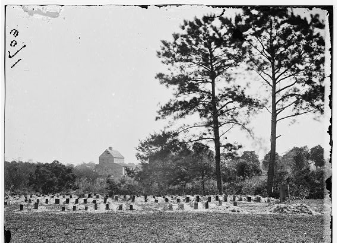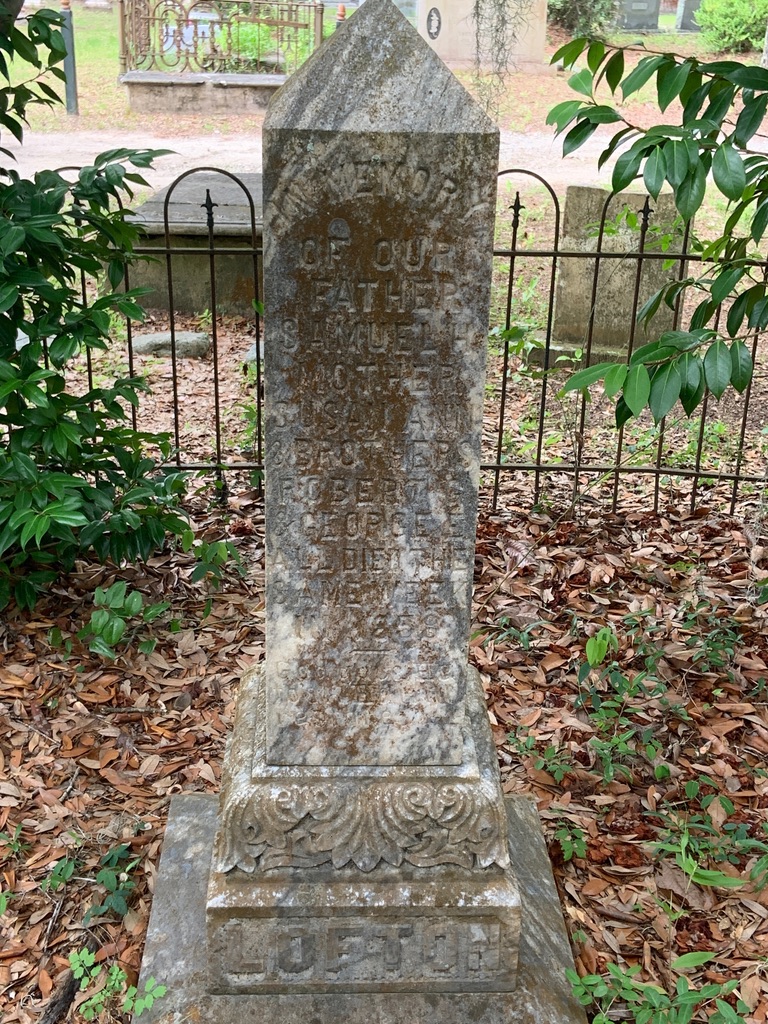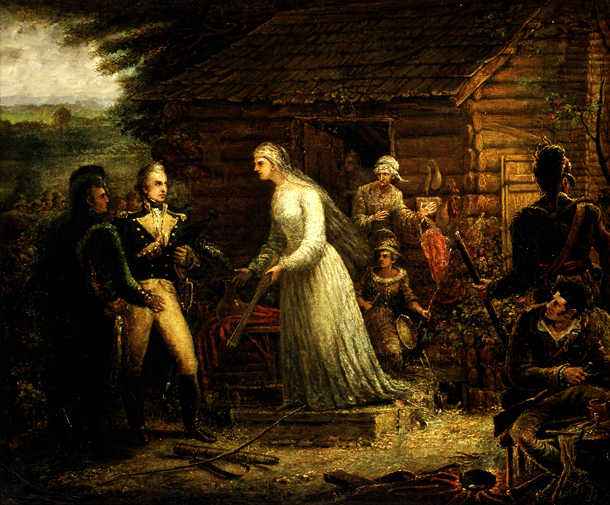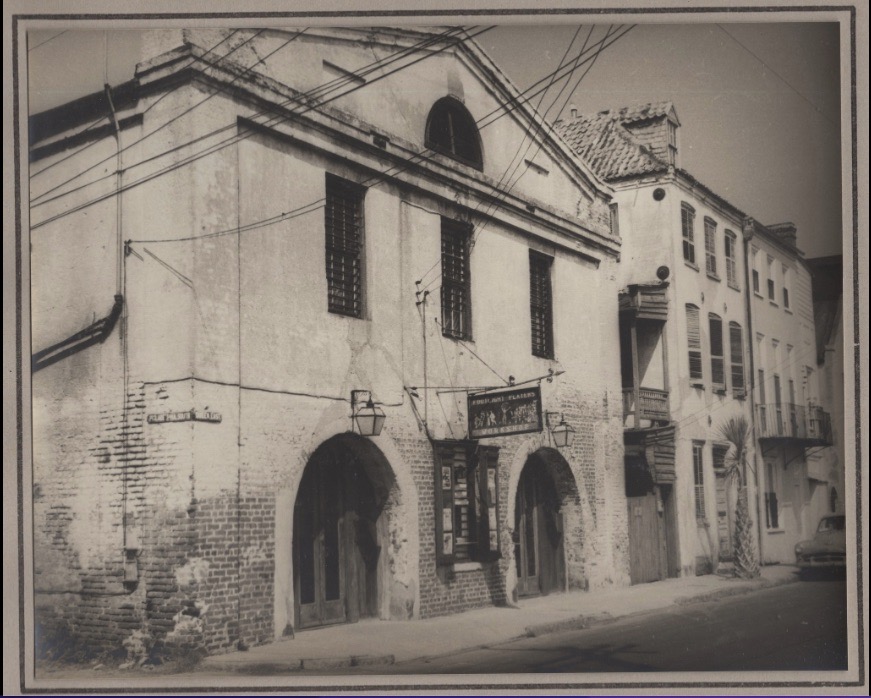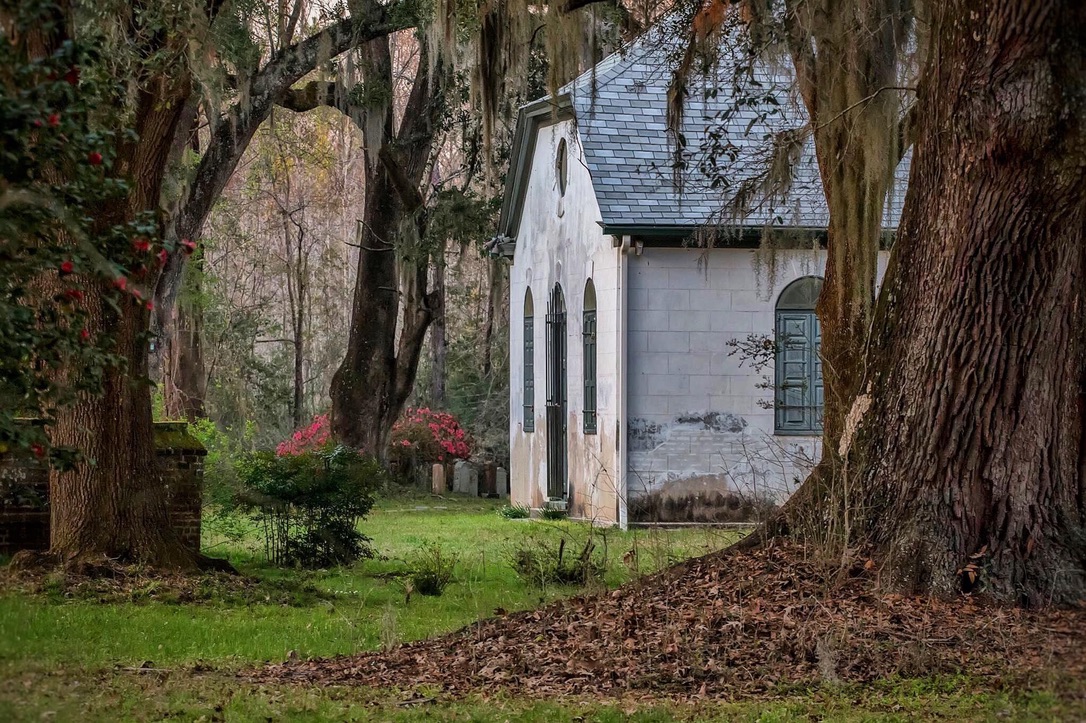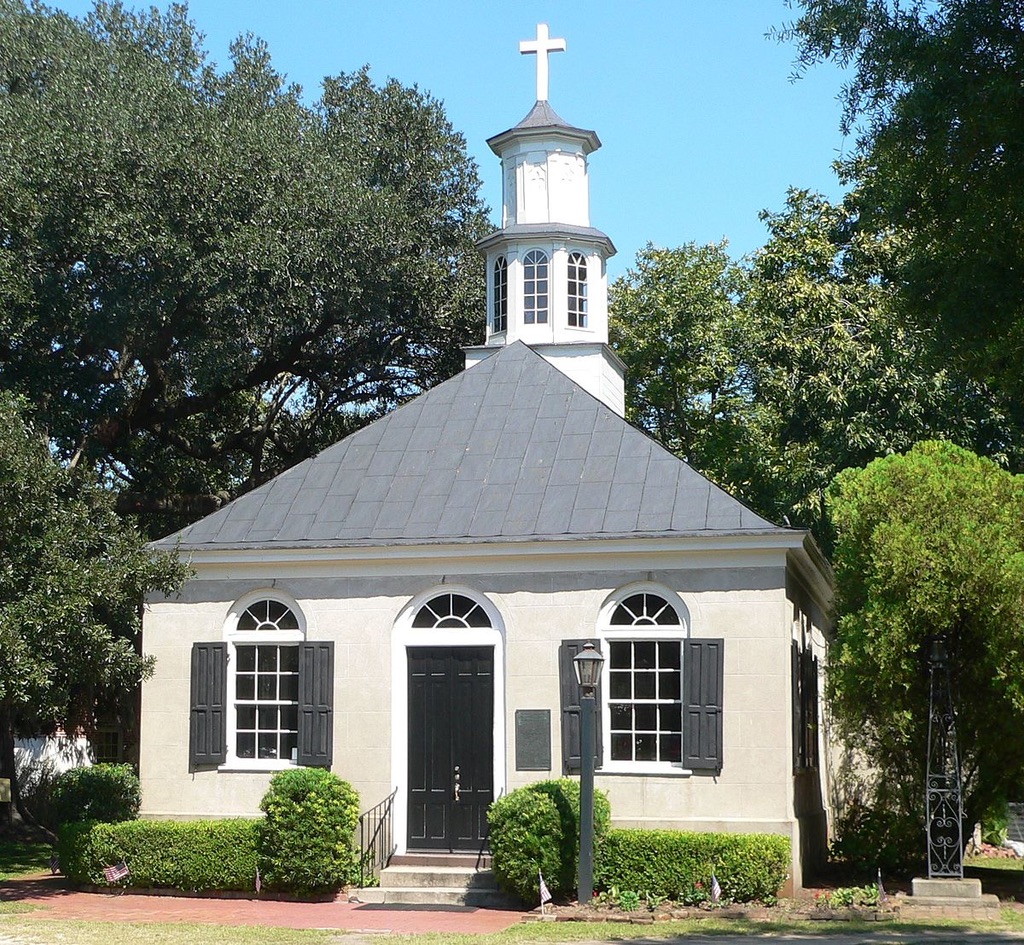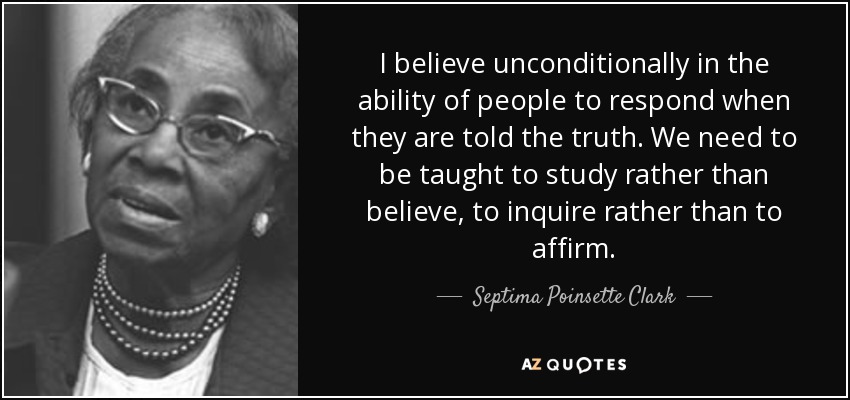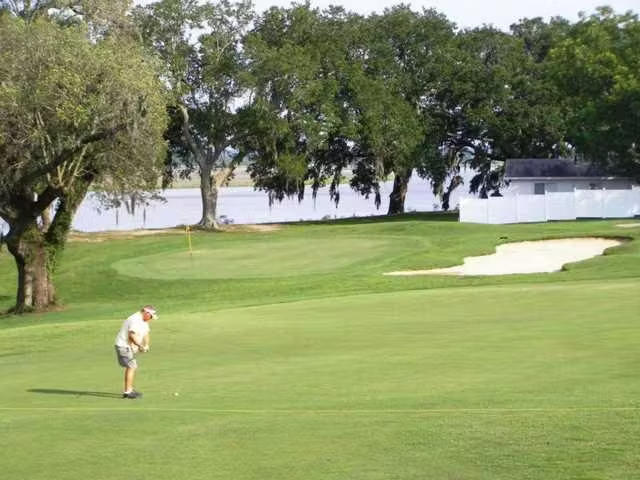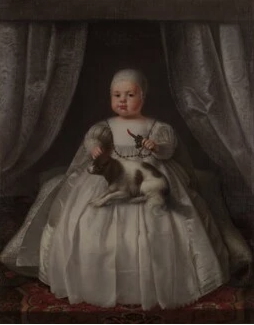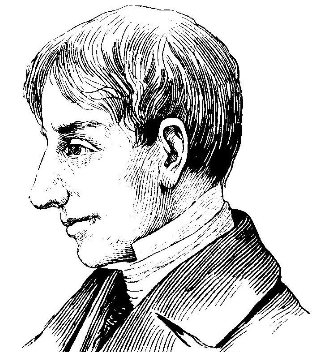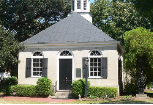
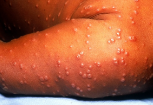
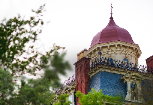
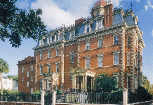
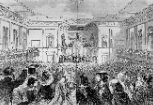
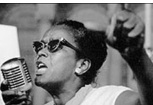
MAY
May 1
1540 -- Hernado de Soto and his Spanish army reached the village of the Cofitachequi tribe, near the the confluence of Pine Tree Creek and the Wateree River, near the present-day site of Camden, and were met by the Lady of Cofitachequi, who sought a peaceful alliance with the Europeans. (Source: South Carolina Women, p. 11)
1791 -- President Washington had breakfast at Hampton Plantation, continuing south on the King's Highway where he passed St. James Santee parish church before stopping at Awendaw Barony for the evening.
May 2
1791 -- President Washington had breakfast with Gov. Charles Pinckney at Snee Farm before departing from Haddrell's Point and arriving at Charleston at 2 p.m. After reviewing a military parade he went to his lodgings at Thomas Heyward's house at 87 Church Street.
1865 -- Thousands of emancipated slaves marched in a parade to the old Washington Race Course, which served as a Union POW camp during the Civil War. They exhumed mass graves and reburied the Union dead with respect and ceremony, then celebrated their newfound freedom with speeches and a picnic. Some credit this celebration as the nation's first Memorial Day.
May 3
1735 -- "Good Governor" Robert Johnson, who served under both proprietary and royal rule of the Charles Town colony, died and was buried in St. Philip's churchyard. Unfortunately, his memorial stone was destroyed and exact burial location lost when the church burned in 1835.
1791 -- President Washington was visited by a delegation of Charleston women before being entertained with a dinner at the Exchange Building.
1860 -- After struggling unsuccessfully to find common ground, delegates to the Democratic National Convention called it quits, splitting the Democratic Party and paving the way for a relatively unknown Republican named Abraham Lincoln to succeed in his bid for the White House.
1898 -- Septima Poinsette Clark was born.
May 4
1738 -- The Gazette reported that several recently imported slaves had small pox and suggested that readers "take all imaginable care to prevent" its spread.
1757 -- Local militias to maintain the peace was common in the Lowcountry before the American Revolution. On May 4, the Goose Creek Council Journal listed the Four Hole Company muster roll serving under Col. Walter Izard, including Lt. Col. Robert Rivers, Maj. Benjamin Singleton, Capt. Peter Fauer, and Lt. Ludovic Linder. (Source: Goose Creek: A Definitive History, Vol. 1, p. 106.)
1791 -- President Washington visited the 1780 siege lines before attending a ball in his honor at the Exchange Building.
1906 -- On opening day of Belmont’s Race Track, nearly 40,000 people streamed through the Washington Race Course's former gates at their new New York home.
May 5
1666 -- Thomas Pinckney, future father of Col. Charles Pinckney, was born.
1791 -- President Washington visited forts Moultrie and Johnson.
1930 -- South Carolina's great ornithologist Arthur T. Wayne died.
May 6
1715 -- Following the Yamasee's Good Friday Massacre at Pocotoligo, Gov. Charles Craven ordered a contingency of paid soldiers to assemble under the command of Col. James Moore II, directing them to "follow after, take and destroy all our Indian enemies." (From the South Carolina Colonial House Journal, p. 388, quoted in The Goose Creek Bridge: Gateway to Sacred Places, pp. 51/52)
1791 -- President Washington toured the city, meeting with James Hoban, the supervisory architect of the Charleston County Courthouse restoration.
May 7
1780 -- Fort Moultrie fell before an amphibious assault by the British.
1791 -- President Washington toured the Orphan House before taking in a view of the city from St. Michael's steeple. A celebration was held in his honor that evening.
May 8
1738 -- Daniel Cartwright sold his land, which included today's Hampton Park, to John Braithwaite (Source: A History of Charleston's Hampton Park)
1781 -- American Patriots led by Gen. Francis "Swamp Fox" Marion and Lt. Col. "Light Horse" Harry Lee arrived at a plantation house owned by Rebecca Brewton Motte which had been captured and fortified by the British for use as a depot because of its strategic location at the confluence of the Congaree and Wateree rivers. With about 175 soldiers encamped there, the British had renamed the site Fort Motte in a nod of admiration for her even though they were on opposing sides of the war. Marion and Lee hoped to capture the fort before British Gen. Francis Rawdon arrived.
1791 -- President Washington worshipped at both St. Philip's and St. Michael's churches.
May 9
1780 -- British Gen. Sir Henry Clinton ordered 200 artillery pieces encircling Charles Town to bombard the city. Twenty houses were hit and set afire. Patriot Gen. William Moultrie recalled the bombardment "was incessant, cannon balls whizzing and shells hissing continually amongst us; ammunition chests and temporary magazines blowing up; great guns bursting and wounded men groaning along the lines." (Source: Charleston! Charleston!, p. 161-162)
1791 -- President Washington bid Charlestonians good-bye as he left the city on Bee's Ferry to spend his last night in the Lowcountry at his cousin William Washington's Sandy Hill Plantation in Ravenel.
May 10
1715 -- In the midst of the Yemasee War, the Rev. Francis LeJau wrote a letter to the Secretary of the Society for the Propagation of the Gospel in Foreign Parts, alerting them that Dr. Nathaniel Snow had assembled families along the colony's Goose Creek frontier at an "improvised garrison" at his Red Bank Plantation. This would later play a key role in saving the Charles Town colony. (Source: The Goose Creek Bridge, p. 53)
May 11
2025 -- According to the Post and Courier Real estate transactions, Elizabeth Lucas Rawl sold her Dockside condo to James Daniel Gentry Jr. and Patrick Quinn Dunn for $575,000.
The TBLB Real Estate Holding LLC and the Estate of Barbara Eileen Rothwell sold 14 Atlantic Street to The JGA Irrevocable Trust for $2.8 million.
49 Society Street LLC sold 49 Society Street to the David Scott Pout Revocable Livinv Trust for $3.9 million.
The Myron C. Harrington Jr. and Ann Hurst Harrington Living Trust sold 3 George Street to Rex A. and Kristine L. McClure for $1.1 million.
May 12
1780 -- After a 42-day seige, American Gen. Lincoln surrendered Charles Town with its 5,500 troops and military supplies. One British officer noted the city's defenders were "the most ragged rabble I ever beheld." Another officer wrote the "people looked greatly starved," the houses "were full of wounded," while some of the finer residences were "empty and locked." (Charleston! Charleston!, p. 162.)
1964 -- According to an article in the News and Courier, a domestic rabbit was discovered by two members of the Footlight Players running loose on East Bay Street. The two put out a call for its owner and found him at a West Ashley address. The owner said he could no longer take care of the bunny or its mate, who was still in the owner's possession. He asked the acting group to find a new home for both rabbits, which they did. The rabbits' new residence was wth Robert M. Hollings on Queen Street.
May 15
1916 -- The Lowcountry's earliest landfalling tropical storm on record came ashore on Fripp Island.
2024 -- Margaret Gregorie, a former manager of Mama's Money, a well-known King Street bar popular with College of Charleston students in the 1970s and '80s, died.
May 21/22
1767 -- A deed recorded for William Withers referred to his property along the Cooper River as "the neck," perhaps providing a clue as to how Goose Creek got its name. (Source: Clara A. Langley, South Carolina Abstracts, 4 vols., Easley, South Carolina Historical Press, Inc. 1984, Vol. 3:277, 365.)
May 22
1721 -- Charlestonians welcomed South Carolina's first Royal Governor, Francis Nicholson, having won their efforts to become a colony of the Crown, rather than of the Lords Proprietors.
1736 -- Charles Lowndes, father of Rawlins Lowndes though estranged from his wife, being heavily in debt and unable to support his family, fatally shot himself while incarcerated within the Half-Moon Bastion where the Old Exchange Building now stands at the eastern terminus of Broad Street. As a gentleman, he had been allowed to keep his firearm during his incarceration.
May 23
1788 -- A special convention of South Carolinians voted to ratify the new Constitution of the United States of America.
May 26
1780 -- Jonathon Marquin and James Donaldson of the British 47th Regiment were court-marshaled and sentenced to 500 lashes each for "attempting to rob the House of an Inhabitant" of Charles Town. (Stolen Charleston, p. 20)
May 27
1744 -- Eliza Lucas married widower Charles Pinckney, a man old enough to be her father. It was a love match of her choosing.
May 29
1630 -- Charleston's namesake, Charles II, was born "at noon with Venus the star of love and fortune shining high over the horizon." (Source: A Short History of Charleston, p. 10)
May 31
1861 -- The Tenth Regiment of South Carolina Volunteers gathered for the first time. Among them was young Henry Michael Lofton. (Source: Home in the Village, p. 75)
1940 -- The Scottish Rite Cathedral Association sold the Rodgers Mansion at 149 Wentworth Street to the Atlantic Coast Life Insurance Company.
